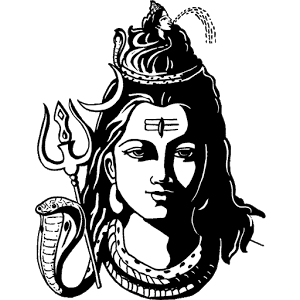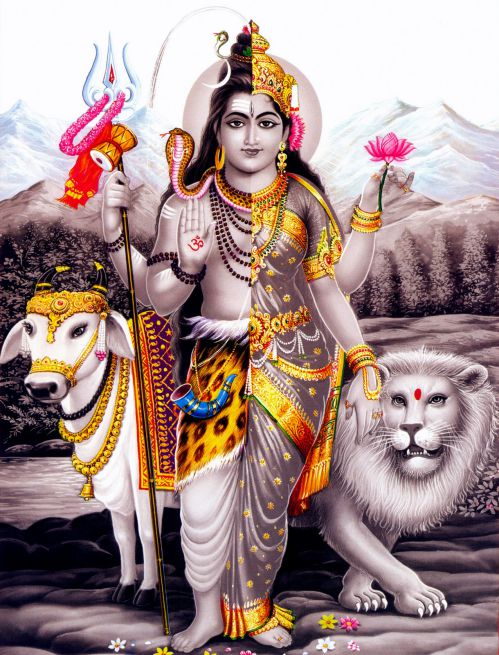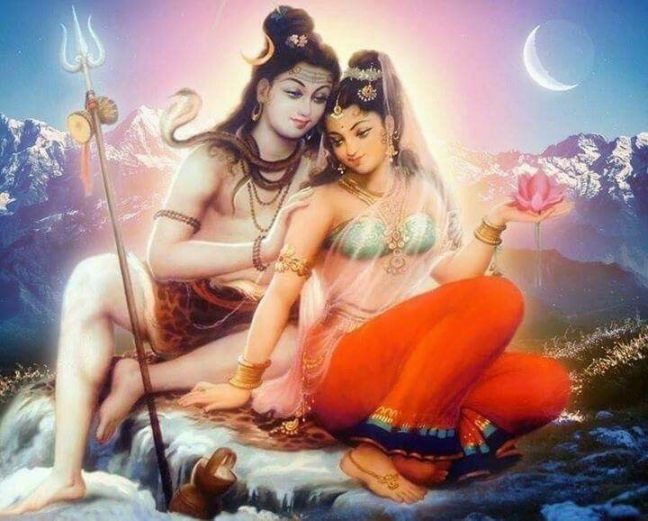No products in the cart.
In the Tantric cosmology, the whole universe is perceived as being created, penetrated and sustained by two fundamental forces, which are permanently in a perfect, indestructible union. These forces or universal aspects are called Shiva and Shakti.
The tradition has associated to these principles a form, respectively that of a masculine deity and that of a feminine one. Accordingly, Lord Shiva represents the constitutive elements of the universe, while Shakti is the dynamic potency, which makes these elements come to life and act.
From a metaphysical point of view, the divine couple Shiva-Shakti corresponds to two essential aspects of the One: the masculine principle, which represents the abiding aspect of God, and the feminine principle, which represents Its Energy, the Force which acts in the manifested world and life itself.
Shakti here stands for the immanent aspect of the Divine, that is the act of active participation in the act of creation. This Tantric view of the Feminine in creation contributed to the orientation of the human being towards the active principles of the universe, rather than towards those of pure transcendence.
Therefore, Shiva defines the traits specific to pure transcendence and is normally associated, from this point of view, to a manifestation of Shakti who is somewhat stronger (such as Kali and Durga), personification of Her own untamed and limitless manifestation.
Owing to the fact that in a way, Shakti is more accessible to the human understanding (because this regards aspects of life that are closely related to the human condition inside the creation), the cult of the Goddess (DEVI) has spread more forcibly.
 Shaktism on Shiva and Shakti
Shaktism on Shiva and Shakti
Shaktism’s focus on the Divine Feminine does not imply a rejection of Masculine or Neuter divinity. However, both are deemed to be inactive in the absence of Shakti. As set out in the first line of Adi Shankara’s renowned Shakta hymn, Saundaryalahari (c. 800 CE): “If Shiva is united with Shakti, he is able to create. If he is not, he is incapable even of stirring.” This is the fundamental tenet of Shaktism, as emphasized in the widely known image of the goddess Kali striding atop the seemingly lifeless body of Shiva.
Broadly speaking, Shakti is considered to be the cosmos itself – she is the embodiment of energy and dynamism, and the motivating force behind all action and existence in the material universe. Shiva is her transcendent masculine aspect, providing the divine ground of all being. “There is no Shiva without Shakti, or Shakti without Shiva. The two […] in themselves are One”.
The 5 Powers of Shakti
There are many aspects, forms and names of shakti who is the mother of all. In creation she distinguishes herself, or through the will of Siva, into three basic aspects:
- para-shakti (transcendental energy),
- apara-shakti (immanent energy) and
- para-apara-shakti ( an intermediary energy).
In the texts of Shaivism we also find a reference to five supernatural powers of shakti, awakened in himself by Siva. Their permutation, combination, concealment and manifestation is believed to be responsible for the multiplicity, plurality, diversity and duality of the beings and objects and their forms and shapes in the manifested worlds. The five aspects of shakti manifested by Siva are:
- chit-shakti or the power of consciousness,
- anada-shakti or the power of bliss consciousness,
- iccha-shakti, the power of desire or will,
- kriya-shakti the power of action and
- jnana-shakti or the power of knowledge
Siva unleashes these five powers in the beginning of creation and withdraws them back into himself at the time of dissolution. In between he employs these energies for the purposes of creation (srishti), preservation (sthithi), samhara (destruction or modification), concealment (tirobhava) and revelation (anugraha).
Shiva Shakti Story
The legend of the marriage of Shiva and Shakti is one the most important legends related to the festival of Mahashivaratri. The story tells us how Lord Shiva got married for the second time to Shakti, his divine consort. According to legend of Shiva and Shakti, the day Lord Shiva got married to Parvati is celebrated as Shivaratri – the Night of Lord Shiva.
The Legend goes that once Lord Shiva and his wife Sati or Shakti were returning from sage Agastya’s ashram after listening to Ram Katha or story of Ram. On their way through a forest, Shiva saw Lord Rama searching for his wife Sita who had been kidnapped by Ravana, the King of Lanka. Lord Shiva bowed his head in reverence to Lord Rama. Sati was surprised by Lord Shiva’s behavior and inquired why he was paying obeisance to a mere mortal. Shiva informed Sati that Rama was an incarnation of Lord Vishnu. Sati, however, was not satisfied with the reply and Lord asked her to go and verify the truth for herself.
Using her power to change forms, Sati took the form of Sita appeared before Rama. Lord Rama immediately recognized the true identity of the Goddess and asked, “Devi, why are you alone, where′s Shiva?” At this, Sati realized the truth about Lord Ram. But, Sita was like a mother to Lord Shiva and since Sati took the form of Sita her status had changed. From that time, Shiva detached himself from her as a wife. Sati was sad with the change of attitude of Lord Shiva but she stayed on at Mount Kailash, the abode of Lord Shiva.
Later, Sati’s father Daksha organised a yagna, but did not invite Sati or Shiva as he had an altercation with Shiva in the court of Brahma. But, Sati who wanted to attend the Yagna, went there even though Lord Shiva did not appreciate the idea. To her great anguish, Daksha ignored her presence and did not even offer Prasad for Shiva. Sati felt humiliated and was struck with profound grief. She jumped into the yagna fire and immolated herself.
Lord Shiva became extremely furious when he heard the news of Sati’s immolation. Carrying the body of Sati, Shiva began to perform Rudra Tandava or the dance of destruction and wiped out the kingdom of Daksha. Everybody was terrified as Shiva’s Tandava had the power to destroy the entire universe. In order to calm Lord Shiva, Vishnu severed Sati′s body into 12 pieces and threw them on earth. It is said that wherever the pieces of Shakti’s body fell, there emerged a Shakti Peetha, including the Kamaroopa Kamakhya in Assam and the Vindhyavasini in UP.
Lord Shiva who was now alone, undertook rigorous penance and retired to the Himalayas. Shakti took a re-birth as Parvati in the family of God Himalaya. She performed penance to break Shiva’s meditation and win his attention. It is said that Goddess Parvati found it hard to break Shiva’s meditation but through her devotion and the persuasion by sages and devas, Parvati, also known as Uma, was finally able to lure Shiva into marriage and away from asceticism. Their marriage was solemnized a day before Amavasya in the month of Phalgun. This day of union of God Shiva and Shakti is celebrated as Mahashivratri every year.
There is no Shiva without Shakti and yoga is a realization of the unity of all things. That is not to say that everything in tantrik texts is figurative; many describe practices which are said to bring about this realization.
Shiva Shakti Mantras
Shiva Shakti Panchakshari Mantra
“Om Hrim Namah Shivaya”
Important Shiva Shakti Mantra
(i) “Om Shiva Om Shakti”
(ii) “Namah Shiva Namah Shakti”
(iii) “Om Sarva Mangal Mangaley Shivay Sarvarth Sadhike
Sharanye Trambhake Gauri Narayani Namostutey”
Therefore, Shakti is the dynamic power of Siva through which he manifests the worlds and their myriad objects and beings. He brings forth the worlds and their beings through his will and his dynamic energy, Shakti.

Other Lord Shiva Articles You May Like














Hi The YouTube video of SHIV TANDAV STOTRAM is not available now,
Please update/make available it again as my whole family love this stotram and with this particular dhun.
Please let me know if there is any requirement needed from my side to fulfill.
Thanks a lot
Dinesh kumar
9818683429
Delhi